Filters: Collection: "ir_som" Type: "Text"
| Author | Title | Description | Subject | Date | ||
|---|---|---|---|---|---|---|
| 1 |
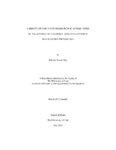 |
May, Brittany Nixon | A survey of early childhood public school music in the district of columbia: assessing content and teacher preparation | The purpose of this study was to examine early childhood music teaching processes and practices of public school elementary general music teachers in the District of Columbia Public Schools (DCPS). The goals were to (1) use the Opportunity-to-Learn Standards for Music Instruction: Grades PreK-12 and... | Early childhood music education; Elementary general music education; Music education; Teacher preparation | 2015-05 |
| 2 |
 |
Worthen, Cherilyn Renee | The choir school of the Mormon Tabernacle Choir: history and curriculum 1999-2013 | The distinctiveness of the Mormon Tabernacle Choir (MTC) as a unique American choral ensemble is revealed in a persistent paradox that both underscores its history and sets it apart from other choral organizations. By virtue of its widely distributed television broadcasts, recording projects, and to... | Choir; Choir school; Choir training; Choral music; Choral pedagogy; Mormon tabernacle choir | 2014-12 |
| 3 |
 |
Whitney, Annette | Contemporary American art song: John Alden Carpenter, Charles Edward Ives, Aaron Copland and Ned Rorem | Before the songs of these four composers can properly be discussed and their musical ideas understood, there are a few things about the general trends of music composition in America and the American musical culture itself that ought to be understood. Before World War I America imported her art from... | 1966-08 | |
| 4 |
 |
Thomas, Brian David | Diffused paradigms: musical depictions of biodegradation, refraction of sound, and memory deterioration in Sorensen's Sterbende Garten | In Sterbende Gärten (Decaying or Dying Gardens) Bent Sørensen employs specific compositional methods in order to depict biodegradation of plants, refraction of sound, and memory deterioration in each of the three movements of the work, respectively. He obscures the formal design of the first movem... | Bent; Gärten; Music; Sørensen; Spectral; Sterbende | 2011-05 |
| 5 |
 |
Kirschner, Aaron J. | Divisions without hierarchy: four-dimensional modeling of submeter and its use in empirical analysis of the musics of the new complexity | Central to virtually all scholarship of meter is a notion of beat hierarchy. However, when beat units and/or tempi are in constant flux, defining a hierarchy becomes nearly impossible. Such impulse structuresâ€"common to music of the New Complexityâ€"resist traditional scholarship of meter/sub... | Empirical Analysis; Ferneyhough; Meter; New Complexity; Rhythm; Submeter; Music | 2017 |
| 6 |
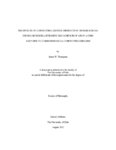 |
Thompson, James W. | The effects of conducting-gesture instruction on high school string orchestra students' recognition of and playing response to common musical conducting emblems | The purpose of this study was to investigate the effects of conducting-gesture instruction on high school string orchestra students' recognition of and playing response to common musical conducting emblems. Musical conducting emblems were defined as nonverbal movements or gestures used by conductors... | Conducting-gestures; Conducting instruction; High school music; Nonverbal communication; Orchestra students; Performance response; Music; Music education | 2012-08 |
| 7 |
 |
Electronics to accompany the Feild and Its Knower | Supplementary audio files for Glassett dissertation "Composing with vocal physiology: Extended technique categories and Berio's Sequenza III". | Berio, Luciano, 1925-2003. Sequenza III; Extend techniques; Overtones; Vocal physiology | 2011-03-10 | |
| 8 |
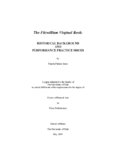 |
Jones, Pamela Palmer | The Fitzwilliam virginal book: historical background and performance practice issues | During the reign of Queen Elizabeth I in England in the late sixteenth-early seventeenth centuries, very repressive anti-Catholic laws were enacted by Parliament. Catholicism then became the illegal underground religion of the gentry, sustained primarily by a web of intricate family alliances. The a... | Fitzwilliam virginal book; Harpsichord; English; Baroque | 2009-05 |
| 9 |
 |
Russell, Jessica | From the Old testament to the Paris Opera: Saint-Saëns's Samson Et Dalila and nineteenth-century french orientalism | Despite its successful premiere in Weimar in 1877, Saint-Saëns's Samson et Dalila met resistance as the composer attempted to stage the biblical story in France. When the work finally premiered in Paris in 1890, the opera directors exclaimed, "If we only knew!" In this thesis, I explore the aspec... | Gender; Nineteenth-century opera; Orientalism; Saint-Saëns; Samson et Dalila | 2017 |
| 10 |
 |
Bickmore, Isaac Lamont | Functions of popular music in the lives of adolescents | This study determines that a specified group of adolescents' favorite songs fulfill Frith's functions of popular music; (a) to create a type of self-definition; (b) to provide a way of managing the relationship between one's private and public emotional lives; (c) to shape popular memory, organiz... | Music and youth; Group identity | 2010-02-10 |
| 11 |
 |
Witham, Nathan | Generative music | This thesis project is the result of months of research and development into processes to create a generative system of chance based music making via software built using MAX/MSP. The goal of this music is to combine chance based algorithms with specific harmonic number patterns to foster an environ... | Music | 2014-12 |
| 12 |
 |
Landvatter, Scott Alan | Gustav Holst's Savitri Elucidated by Hindu thought | Gustav Holst, throughout his life manifesting a rather mystic penchant, was, in his early career, quite taken with Hindu writings? it was as a result of his studies in Sanskrit that his chamber opera Savitri , Opus 25, emerged in 1908. Based on a story in the Mahabha - rata, the one act opera tells ... | Opera; Hindu writings; Music | 1984-12 |
| 13 |
 |
Madsen, Allen Andrew | Hollywood film music in the secondary performing ensemble: Utah music educators' attitudes and teaching practices | The purpose of this study was to determine the impact of Hollywood film music on the secondary instrumental music educator in Utah. Ensemble directors must take many factors into account before selecting the pieces they will perform with their students each year. One genre of music that is increasin... | Motion picture music | 2010 |
| 14 |
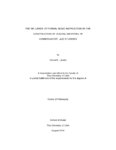 |
Larsen, Vance E. | The influence of formal music instruction on the construction of musical identities of conservatory jazz students | Scholarship in musical identity has been tied to psychological and sociological theories of identity construction. Recent scholarship has used social identity theory as a means to explore the relationship of music to identity. Scholars have advocated for phenomenological inquiry in order to gain an ... | Identity; Jazz | 2014-08 |
| 15 |
 |
Bidwell, Benjamin Robert | The magician's folly | A music score of a ballet for orchestra based on C.S. Lewis' Chronicles of Narnia. | Ballet; orchestral music | 2010 |
| 16 |
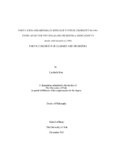 |
Kise, Lyudmila | Part I: Sofia Gubaidulina's approach to pitch centricity in Two Paths: music for two violas and orchestra a dedication to Mary and Martha (1999) Part II: concerto for clarinet and orchestra | This theoretical study is devoted to the analysis of pitch centricity in Sofia Gubaidulina's post-tonal composition Two Paths: Music for Two Violas and Orchestra (1999). A detailed examination of Gubaidulina's approach to the exploration of axes of symmetry and sonic organization as a whole, inclu... | Concerto; Pitch centricity; Sofia Gubaidulina; Two paths | 2011-12 |
| 17 |
 |
Iachimciuc, Igor | Part I: Sound color in the music of Gyorgy Kurtag, Part II: Leopard's path, thirteen visions for chamber ensemble | The dissertation is in two parts, a theoretical study and a musical composition. In Part I the music of György Kurtág is analyzed from the point of view of sound color. A brief description of what is understood by the term sound color, and various ways of achieving specific coloristic effects, are... | Gyorgy Kurtag; Music; Sonorism; Sound color; Timbre; Tone color | 2010 |
| 18 |
 |
Part I: Traditional elements and spectral content in Color by Marc-André Dalbavie Part II: Siberia for wind ensemble and electronics | The goal of this dissertation is to explore some recent tendencies in the evolution of spectral music. Color by Marc-André Dalbavie is a prominent example of the implementation of traditional elements within a spectral context. The work selected for analysis encompasses an orchestral piece that cov... | Dalbavie, Marc-André, 1961- Color | 2013-05 | |
| 19 |
 |
Daily, Nels Drue | Spheres | Spheres in three movements. Convex, Core, Concave by Nels Drue Daily 2008. For 2 Violins, 2 Violas, 2 Cellos, B-flat Clarinet and Bass Trombone. | 2009-05 | |
| 20 |
 |
Ballinger, Danielle Marie | Student attitudes toward the use of learning centers in the elementary general music classroom | This study investigated the attitudes of elementary-school students toward the use of learning centers as a tool of instruction in the elementary general music classroom. Participants (N=24) were members of two third-grade classes in a small K-12 independent school in Colorado. Participants experie... | Centers; Differentiation; Elementary; General; Learning; Music | 2011-12 |
| 21 |
 |
Hurtado, Jared Paul | Study of Hispanic and non-Hispanic white music teachers' influence | The purpose of this study was to report: (a) the enrollment of Hispanic and non-Hispanic White music students under the direction of Hispanic and non-Hispanic White music teachers (N=\3), (b) any practically significant differences between the enrollment of Hispanic and non-Hispanic White music st... | Music teachers, United States, Influence; Music students, Hispanic American; musicians, Education | 2008-08 |
| 22 |
 |
Marie, George Thomas | Tiny infinity for orchestra and Stefan Wolpe's Zone technique and Ralph Shapey's late music: an intensive analysis of String Quartet no.9 | This dissertation consists of two components, a composition for orchestra entitled Tiny Infinity and a theoretical study entitled "Stefan Wolpe's Zone Technique and Ralph Shapey's Late Music: An Analysis of the Introduction Movement of Shapey's String Quartet No. 9 ." The article presents a comparat... | Music composition; Music theory and analysis; Ralph Shapey; Stefan Wolpe | 2014-08 |
| 23 |
 |
Bernal, Sergio | The triumph of joy over tragedy: pitch A in Mahler's Fifth Symphony | One of the extraordinary innovations found in Mahler's symphonies is the use of progressive tonality as a vehicle to express emotional transformation. Two of Mahler's four "Wunderhorn" symphonies, the Second and Fourth, both progress away from the original tonic and end in a mediant or submediant ke... | Analysis; Fifth; Harmonic; Mahler; Melodic; Symphony | 2013-05 |
| 24 |
 |
Anderson, Briawna A. | Troubled authenticity amd the romanticized West: reevaluating Charles Wakefield Cadman's 1918 opera Shanewis | In 1918, American composer Charles Wakefield Cadman completed the opera Shanewis or the Robin Woman, which was featured during two consecutive seasons at the Metropolitan Opera House in New York. It was the first American opera to receive the honor of a double run and was popular throughout the 1920... | American Music; Cadman; Indianism; Opera; Shanewis; Tsianina | 2013-05 |
| 25 |
 |
Valley: three corners of our room; an interdisciplinary work for chamber choir, solo instruments, and electronics | Valley: Three Corners of Our Room is a three-movement musical work for chamber choir, solo instruments (trumpet and flute), and electronics. The overarching theme of the project incorporates issues of environmentalism, climate change, and sustainability, and each movement ("corner") seeks to bring a... | music composition; interdisciplinary; collaboration; environmentalism; climate change; sustainability; music performance; choir; trumpet; flute; electronics; chamber music; sonification; light pollution; noise pollution; Great Salt Lake | 2023 |
